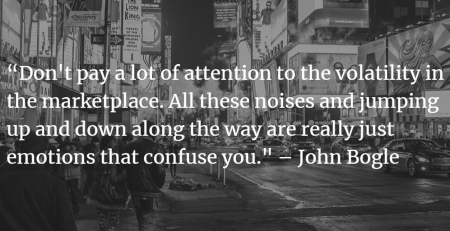In our last post, Behavioral Biases: A 2 part Series, we discussed some of the behavioral biases which investors often fall victim to, focusing firstly on the emotional biases. In this post, we will continue that discussion, now focusing on the cognitive biases.
Unlike emotional biases, which stem from impulse, intuition, and feelings (things most people relate with irrationality), cognitive biases stem from information-processing and statistical errors, which even rational investors, attempting to follow a sound decision-making process, can still fall victim to if they don’t know what to watch out for. Just look at all the very smart professors, doctors, engineers, etc, that tend to underperform when they try their hand at investing.
Warren Buffett explained this issue well when he was asked by a student how he became so successful at investing: “How I got here is pretty simple in my case. It’s not IQ, I am sure you will be glad to hear. The big thing is rationality. I always look at IQ and talent as representing the horsepower of the motor, but the output — the efficiency with which the motor works — depends on rationality. A lot of people start out with 400 horsepower motors but only get 100 horsepower of rationality. It is way better to have a 200-horsepower motor and get it all in output.”
Our goal in this post is to highlight some of the cognitive biases that keep us from acting rationally so that we can identify them and limit their effects on our investment performance.
Cognitive biases come in two main forms:
-
Belief perseverance errors: these relate to the mental discomfort that occurs when new information contradicts our established beliefs. The biases here include conservatism bias, confirmation bias, illusion of control bias, and hindsight bias.
-
Information-processing errors: these relate to how we process new information illogically at times. The biases here include anchoring bias, mental accounting bias, and availability bias.
1. Cognitive Biases: Belief Perseverance Errors
Conservatism bias relates to how investors tend to underweight new information, choosing instead to overweight their initial beliefs. In Bayesian terms, they aren’t updating their priors. For example, an investor might build out a beautiful model in excel of how, say Blockbuster is going to continue rolling out new stores and grow earnings, then one day a small start-up called Netflix shows up and the investor says ‘this might slow Blockbuster down a bit, but the core of my original model still holds up’. Clearly, this would have been an underreaction to the new information.
As a result of conservatism bias, investors tend to hold on to their investment theses longer than the facts would support.
The goal here is to always analyze and weigh new information objectively. Here at Globescan, we always generate a list of key variables to watch out for in each of our investment ideas. When those variables change, we ask how that changes our forecasts and whether our thesis remains intact.
Confirmation bias relates to how investors tend to only notice or give credence to information that confirms their beliefs- whilst ignoring or undermining any information that disagrees with them. For example, an investor might be negative on Facebook, and every time a new negative headline appears, they read it carefully and send it to their friends, whilst at the same time ignoring positive news stories. In reality, all news flow (positive and negative) needs to be weighed in any rational investment process. As humans we do not like to hear or read that we are wrong, so we focus and search for things that tell us we are right.
As a result of confirmation bias, investors tend to consider only good information when things are going well, and only bad information when things are going poorly.
The goal here is to actively seek out contradictory information and challenges to our investment ideas. As Charlie Munger often says, we should know the counter argument better than the people actually making the counter argument. Here at Globescan, we make it a priority to always debate our ideas from the other side. Enforced challenging of ideas is an important part of any successful investment process.
Illusion of control bias relates to how investors tend to believe they have influence over outcomes in the short-run, when they in fact do not. For example, investors overweight the probability of stocks that they choose themselves going up in the short-run relative to the market as a whole. In reality, over a short period of time, the market is random and unpredictable.
As a result of the illusion of control bias, investors tend to trade more than is prudent, feeling like they can time the market and have control over their short-term outcome. They also tend to inadequately diversify, choosing instead to put all their eggs in a single idea where they think they have the most control.
The goal here is to be humble and realize that in the short-run the market, like the universe, is a complex, chaotic and random system. We can be right in our analysis and still have an investment go against us. The trick is to think long-term, as long-term share prices are determined more by genuine earnings and less by random movements. Here at Globescan, we actively try to ignore most of this short-term noise, only paying attention to it when it provides us with an opportunity to buy/ sell a company at a valuation that we believe is attractive.
Hindsight bias relates to how investors tend to think the outcomes that happened were the only outcomes that could have ever happened. In other words, investors see past events as having been predictable after the fact, even though life is probabilistic in nature and there was always the chance that product X could have failed, or company Y could have been outcompeted. The trick to investing is getting those probabilities right before the decision is made.
As a result of hindsight bias, investors tend to overestimate their ability to forecast the future, and unfairly punish a decision that had a bad outcome, even if the reasoning was correct and the odds were in their favor when the decision was made.
The goal here is to always ask ourselves if we are re-writing history to make a bad decision seem good after the fact. Here at Globescan, we try to be intellectually honest, always recording and examining our decision process to learn from outcomes.
2. Cognitive Biases: Information Processing Errors
Anchoring bias relates to how investors tend to “anchor” their decisions to an arbitrary default number which they adjust up or down depending on new information. For example, investors might have paid $100 for a stock, and don’t want to sell it now that it’s trading at $80. In reality- the market doesn’t care what you paid for a stock. The only important decision to make is- is this stock undervalued or overvalued today? In reality, the $80 stock may now only be worth $60, so to sell at $80 is a great decision. Making any decision based on unrealized profit or loss is financially illogical.
As a result of anchoring bias, investors tend to stick too closely to their original forecasts, and irrationally focus on the price that they transacted in a stock. Remember, the underlying fundamentals of a business aren’t affected by an investor’s purchase price.
The goal here is to remember that it does not matter whether we’ve made or lost money in a stock when making the decision to keep owning it today. Here at Globescan, we ignore that price action and instead focus on what we expect the company to earn over the long-run. This is the only way to truly know whether we should keep owning something. One of the most helpful things individual investors can do is to remove the ‘Profit/ Loss’ column from their investment dashboard- all that information does is affect you emotionally, it provides no information on the prospects for that stock going forwards.
Mental accounting bias relates to how investors tend to treat one sum of money differently from another equally sized sum of money, depending on how they account for it in their head. For example, an investor might be willing to take on more risk in an investment account that they inherited (maybe leave it all in a single stock) relative to the risk they would take in their retirement account that they have been slowly building through decades of work. In reality both pools of money and our entire net worth, should be viewed as a single interchangeable resource to be allocated towards our long-term goals.
As a result of mental accounting, investors tend to construct their portfolios in a layered structure with different goals for different accounts. This causes them to create an overall inefficient asset allocation by ignoring correlations between their accounts.
The goal here is to recognize that having separate mental buckets for investments leads us to sub-optimal investment performance. That is why here at Globescan, we try to understand what all our client’s assets are, so that we can best serve their goals through a prudent investment strategy.
Availability bias relates to how investors estimate the probability of an event based on how easily the event comes to mind. For example, an investor who has never experienced a recession might think the probability is very low of one occurring, and an investor who just experienced a recession might think the probability of the next one occurring as much higher than it is. Similarly, recent events are always more easily available and remembered. This is why investors tend to forget every seven years or so that stocks can go down as well as up. We saw this in Q4 2018- we had experienced five years of extraordinarily low volatility- so when the markets took a downturn, many investors panicked, having forgotten that such movements are entirely normal given historic market behavior.
As a result of availability bias, investors tend to make investments based on recent performance, rather than look at the long-term track record of an investment, and more importantly, consider the range of outcomes that the investment’s future might hold.
The goal here is to always think long-term and avoid falling into the trap of believing that recent events will continue forever. Here at Globescan, everything we do is with a long-term mindset, which is what allows us to not panic when the market is down 30%, even though everyone else might be.
Conclusion
The best investors are those who are less affected by cognitive and emotional biases than the general population. As such, it is useful to learn about these different biases so that we can identify them and limit their effects.
However, knowing is only half the battle. We need to adhere to a disciplined investment process that ensures we aren’t succumbing to our ingrained irrational tendencies. This means implementing checklists, debating ideas from both sides, recording and reviewing our decisions, and most importantly, being intellectually honest about how our investments played out. This is what we do at Globescan.






